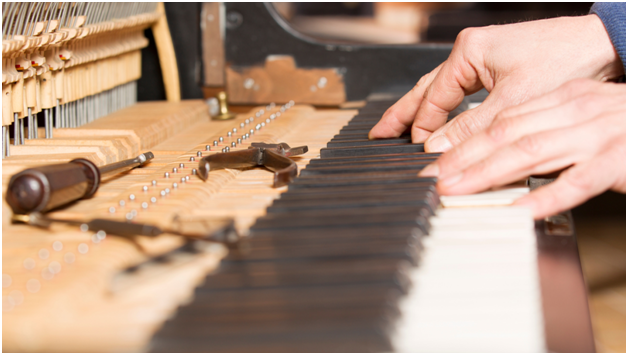
A well-tuned piano doesn’t just sound better—it also lasts longer. But many piano owners aren’t sure how often their instrument should be tuned. Is once a year enough? Do seasonal changes matter? What if you don’t play often? The answer depends on several factors, from the instrument’s age to its environment.
Whether you’re a casual player or a dedicated performer, following expert guidance can help you keep your piano in peak condition. Below are five professional guidelines that shed light on when—and why—you should schedule your next piano tuning.
1. Tune New Pianos More Frequently (3–4 Times in the First Year)
If you’ve recently purchased a brand-new piano, it will need to be tuned more often than an older, well-settled instrument. That’s because new pianos are still adjusting to string tension and environmental conditions. The wood, felt, and strings need time to settle and stretch into their final positions.
Most technicians recommend tuning a new piano three to four times during the first year. After this initial period of adjustment, your piano will typically stabilize and require less frequent tuning—provided it’s well-maintained.
Pro tip: Even if you’re not playing your new piano daily, regular tuning in the first year is critical to helping the instrument stabilize and retain pitch integrity.
2. Follow the Twice-a-Year Rule for Most Pianos
After the initial break-in period, most experts agree that tuning twice a year is ideal for maintaining consistent sound quality and structural integrity. This schedule helps account for seasonal changes in humidity and temperature, which can cause a piano’s wood and strings to expand or contract.
Even if you’re not a frequent player, your piano is still affected by its surroundings. A well-maintained tuning schedule not only keeps the instrument sounding beautiful but also prevents long-term issues like string slippage or tension imbalances.
This frequency is especially important for upright and grand pianos in residential settings. While some concert instruments are tuned before every performance, home pianos benefit from a more sustainable biannual approach.
3. Tune After Every Move or Major Environmental Shift
If your piano has been recently moved—whether across the room or across the country—it’s time for a tuning. Even when professional movers take every precaution, the change in location often introduces differences in humidity, altitude, and temperature. These shifts can subtly alter string tension and compromise the piano’s tuning.
It’s best to allow your piano to acclimate for at least 2–3 weeks after a move before calling a technician. This gives the wood and strings a chance to settle in their new environment. After this period, a thorough inspection and tuning can ensure everything is back in proper alignment.
Similarly, if you’ve recently installed a new HVAC system, changed windows, or renovated the room where the piano resides, those environmental shifts can also impact tuning and should prompt a fresh checkup.
4. Adjust Tuning Frequency Based on Usage
How often you play can also influence how often your piano needs tuning. If you’re a music teacher, performer, or have children practicing daily, the repeated playing can gradually cause the strings to drift out of tune. In these cases, tuning every 3–4 months might be necessary to maintain optimal sound quality.
On the other hand, if your piano is mostly used for occasional practice or decorative purposes, you might be able to get by with tuning once or twice a year. Still, even lightly played pianos require regular attention to maintain structural stability and protect your investment.
5. Don’t Wait Until It Sounds “Bad”
One of the most common mistakes piano owners make is waiting until their piano “sounds off” to schedule a tuning. Unfortunately, by that point, the instrument may already be suffering from unnecessary stress. Waiting too long can cause uneven tension, warping, or additional work for the technician to bring the pitch back to standard (usually A440 Hz).
Pianos are designed to be kept under consistent tension. When that balance is disrupted, other internal components—such as the bridges, soundboard, and pinblock—can begin to degrade. Regular tuning helps preserve the delicate harmony of your instrument’s internal structure.
Think of tuning like a wellness checkup. It’s not just about the sound you hear—it’s about maintaining the integrity of the whole system.
Your piano is more than just a musical instrument—it’s a finely tuned machine that requires regular care. Following these five professional guidelines will help ensure it stays in tune, in shape, and in service for years to come.
Whether you’re a beginner or a lifelong musician, investing in professional piano tuning is one of the simplest yet most powerful ways to extend the life and enjoyment of your instrument. Set a calendar reminder, connect with a trusted technician, and keep your piano playing beautifully through every season.





